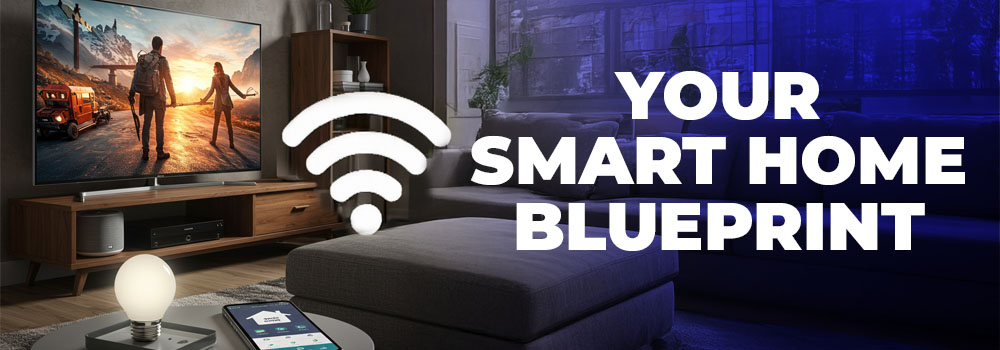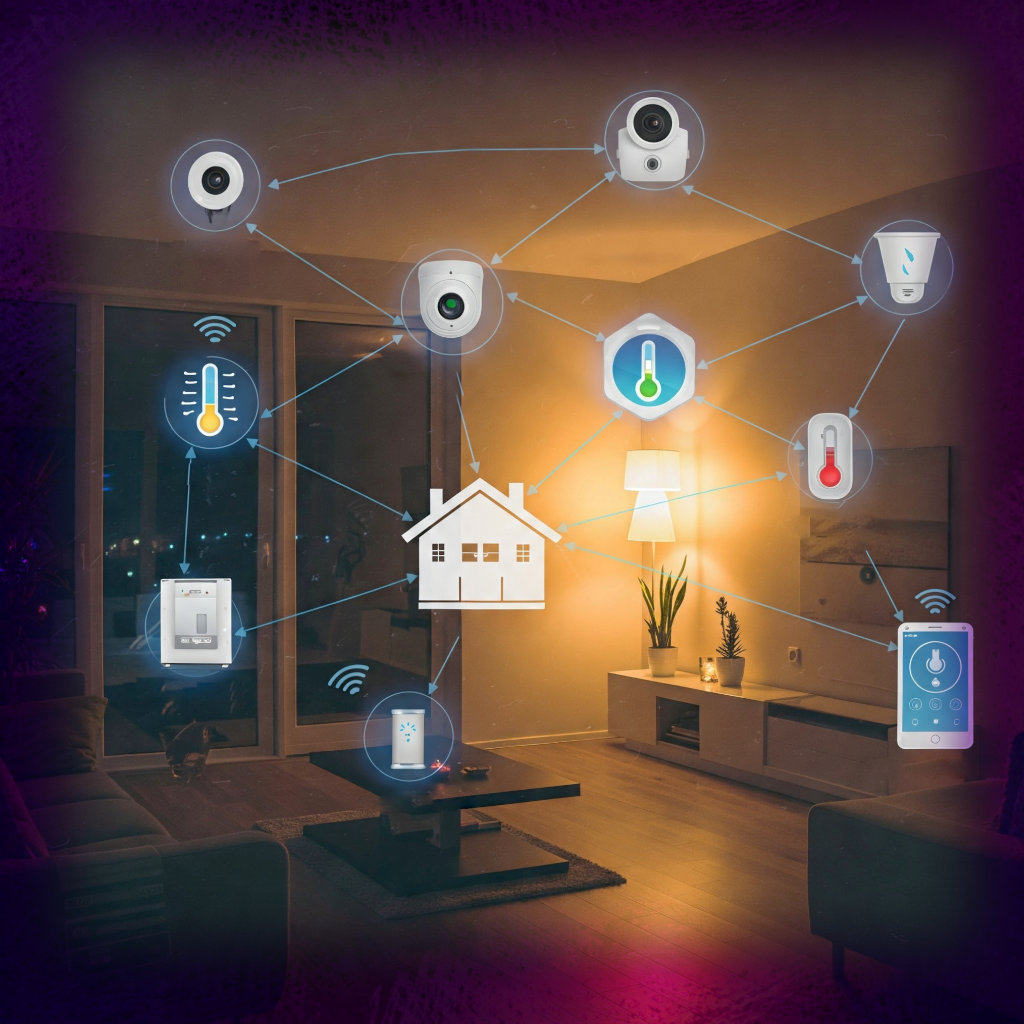The Evolution of Smart Home Automation
Gone are the days of simple timers and remote-controlled lights. Modern smart homes leverage intricate automation sequences that anticipate needs, adjust to behaviors, and operate with near autonomy. This shift transforms homes from reactive to predictive environments.
Why Complex Automations Matter
Basic automations save taps; complex ones redefine living. Imagine lights that adjust based on sunset, blinds that close when rain is forecast, or an AC that pre-cools your home only when you’re en route. These workflows eliminate decision fatigue while optimizing energy, security, and comfort.
Defining Basic vs. Complex Automations
A basic automation turns lights on at sunset. A complex one cross-references weather data, occupancy sensors, and calendar events to adjust lighting, humidity, and music—creating the ideal ambiance for a scheduled dinner party without manual input.
The Role of AI and Machine Learning
Platforms like Google’s Home Assistant now analyze usage patterns, predicting when to run automations before you trigger them. Machine learning tailors routines dynamically, such as lowering thermostat settings when unusual silence suggests an empty house.
Key Components of an Automated Ecosystem
Reliable automations demand robust infrastructure:
- Hubs (SmartThings, Hubitat) for offline processing
- Sensors (motion, contact, ambient light) for real-time data
- Cloud Integrations (Weather APIs, calendars) for contextual awareness
- Local Processing to reduce latency and cloud dependence
Multi-Device Sequences (Routines)
A “Goodnight” routine might:
- Lock doors via smart lock
- Activate security cameras
- Lower thermostat by 2°F
- Fade bedroom lights over 10 minutes
- Play white noise at 35dB—all from one trigger.
Conditional Triggers (If-Then Logic)
Advanced systems execute actions only when conditions are met:
“If motion is detected in the backyard after sunset, but the security system is armed, then floodlights activate and notify my phone.”
Location-Based Automations (Geofencing)
Geofencing automations use phone GPS to trigger actions within set radii. Arriving home could:
- Disable alarms
- Open garage doors
- Start coffee makers—with precision down to 3-meter accuracy.
Time-Based and Sunrise/Sunset Triggers
Astronomical clock integrations enable hyper-localized timing. Blinds can lower at solar noon to block glare, or pathway lights may brighten incrementally as dusk progresses.
Voice-Controlled Advanced Commands
Beyond “turn on lights,” voice assistants now handle nested commands:
“Alexa, start movie mode” could:
- Dim lights to 20%
- Lower projector screen
- Set receiver to ‘Cinema’ EQ
- Mute notifications—showcasing seamless multi-device orchestration.
Apple HomeKit and Shortcuts Deep Dive
HomeKit’s Shortcuts app enables iPhone-powered automations with device-agnostic flexibility. Create workflows that:
- Text you if laundry finishes while you’re away
- Change thermostat settings when Apple Watch detects sleep mode
- Use light color shifts as visual doorbell alerts.
Google Home Script Editor Capabilities
Google’s scripting tool supports JavaScript-like automation coding. Examples include:
- Math-based lighting adjustments (lumens = 100 × log(room occupancy))
- Custom security protocols (e.g., sound alarms if motion persists >5 minutes)
Amazon Alexa Routines with Custom Triggers
Alexa’s “Wait” actions enable delayed steps, like:
- Unlock door for delivery
- Wait 2 minutes
- Take photo via Echo Show
- Relock door—ideal for contactless packages.
Open-Source Solutions: Home Assistant & Node-RED
For ultimate control, open-source platforms like Home Assistant support:
- ESP32 microcontroller integrations
- Fully local processing (zero cloud reliance)
- Custom dashboards with real-time automation analytics
IFTTT vs. Native Automations
While IFTTT bridges 700+ apps, native automations (e.g., SmartThings/Alexa) offer:
- Faster response times (<1s vs. 3–5s)
- Greater reliability (fewer “if this then maybe that” failures)
- Deeper device control (access to firmware-level features)
Step-by-Step: Creating a “Good Morning” Routine
- Trigger: Alarm dismissal or scheduled time
- Actions:
- Raise blinds to 50%
- Brew coffee (smart kettle)
- Play news briefing
- Adjust thermostat from ‘Sleep’ to ‘Day’ mode
- Conditions: Skip if day is weekend
Automating Security: Lights, Locks, and Cameras
A robust security automation might:
- Randomize light timings during vacations
- Snap photos upon unexpected door unlocks
- Sound sirens if glass-break sensors activate post-bedtime
Energy-Saving Climate Control Automations
Pair smart vents with room sensors to:
- Close vents in unused rooms
- Redirect airflow based on real-time occupancy
- Integrate weather forecasts to pre-emptively adjust HVAC
Entertainment System Synchronization
Advanced AV automations can:
- Auto-pause movies when phones detect incoming calls
- Sync Philips Hue lights to on-screen content (via HDMI CEC)
- Lower shades and activate “Do Not Disturb” during streaming
Advanced Notification Systems
Move beyond buzzes with:
- Washer/dryer alerts that account for typical cycle times
- Fridge door left ajar? Flash kitchen lights red after 5 minutes
- Custom doorbell chimes for recognized faces (via smart cams)
Bridging Different Smart Ecosystems
Solutions like Home Assistant or Hubitat unify:
- Zigbee/Z-Wave devices (e.g., Aqara sensors)
- Matter/Thread-enabled products
- Proprietary systems (Lutron, Nest) into one dashboard
Using Webhooks and APIs for Custom Control
API calls enable niche automations like:
- Turning on dehumidifier when outdoor humidity exceeds 70%
- Enabling “gaming mode” (RGB lighting, fan curves) when Steam launches
Zigbee and Z-Wave for Offline Reliability
Local protocols ensure automations run during internet outages:
- Zigbee: Low-power, mesh-networked (ideal for sensors)
- Z-Wave: Longer range, stricter interoperability
Voice Assistant Multi-Platform Syncing
Sync voice commands across Google/Alexa/Siri using:
- Yonomi for cross-platform routines
- IFTTT webhooks to mirror commands
Reducing Automation Lag and Delays
Minimize latency by:
- Prioritizing local over cloud processing
- Assigning static IPs to critical devices
- Avoiding “trigger storms” (too many simultaneous actions)
Handling False Triggers and Errors
Improve reliability via:
- Debounce settings (ignore triggers <5s apart)
- Redundant confirmation (e.g., motion + heat signature)
- Error-handling fallbacks (if AC fails, alert + open windows)
Debugging Failed Automations
Diagnostic tactics:
- Check device batteries (dead sensors break chains)
- Review execution logs (Home Assistant’s Trace feature)
- Test triggers individually before combining
Backup and Restore Strategies
Protect configurations with:
- GitHub backups for scripts
- Regular hub firmware exports
- Physical printouts of critical routines
AI-Powered Predictive Adjustments
Emerging systems like Nest’s “Seasonal Savings” learn to:
- Pre-cool homes earlier on forecasted heatwaves
- Adjust lighting based on historical usage patterns
Biometric Triggers (Face, Voice, Motion)
Future-facing automations may:
- Personalize room settings via facial recognition
- Adjust lighting based on pupil dilation (smart mirrors)
- Voice-stress analysis to trigger relaxation modes
Autonomous Robot Integrations (Vacuum/Mowers)
Coordinate devices like:
- Roborocks that vacuum only when smart tags confirm pets are outside
- Lawn mowers that pause irrigation cycles during operation
Blockchain for Smart Home Security
Decentralized ledgers could:
- Encrypt and log all device access attempts
- Enable tamper-proof automation audit trails
The Role of 5G and Edge Computing
5G’s low latency enables:
- Near-instant cloud automations
- Distributed processing across local edge nodes
Self-Learning Homes: What’s Next?
Future homes may:
- Auto-reconfigure layouts via movable walls
- Deploy drones for indoor air quality monitoring
- Use digital twins for simulation-based optimization
Your Smart Home, Smarter Than Ever
Complex automations transcend convenience—they craft responsive environments that adapt invisibly. Start small: automate one pain point, then scale. The true power lies not in flashy tech, but in systems so intuitive they fade into the background of daily life.

